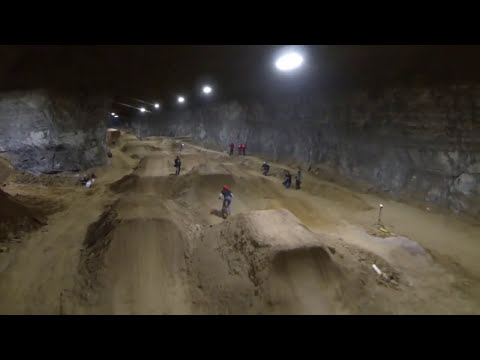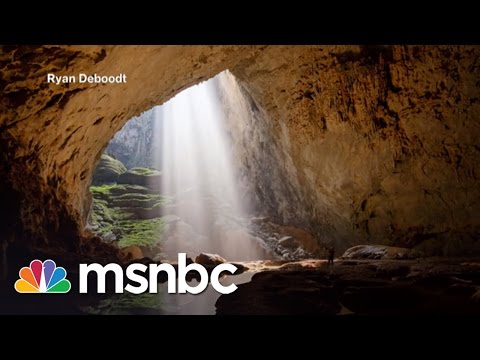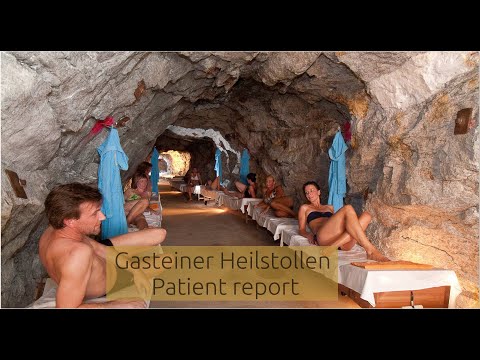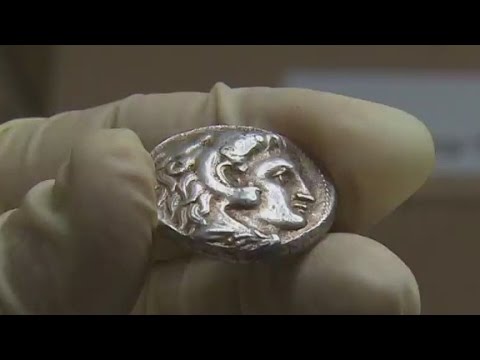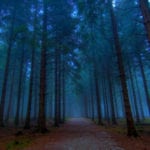10Mountain Biking
Mega Cavern Bike Park in Louisville, Kentucky, is home to the world’s first underground mountain biking course—and the largest indoor bike park ever built—with something for bikers at all levels. Even expert bikers will be able to maneuver through advanced trails and jumps in caverns with 30-meter-high (90 ft) ceilings. “Think about riding or skiing down a mountain,” says co-owner Jim Lowry, describing the trails. “You don’t go speeding straight down, you go back and forth, over bumps and smooth sections. You are moving fast at some points and more slowly at others.” Designed by Joe Prisel, a bike park creator for the ESPN X Games, Mega Cavern Bike Park is built in a modular fashion. That way, a lot of the trails can be modified during the year to create new challenges for riders. With a consistent temperature of 16 degrees Celsius (60 °F) underground, bikers no longer have to worry about weather that makes riding dangerous outdoors. There will be a riding school, too. The 92-acre cavern also sports a business park and entertainment attractions like the Lights Under Louisville, a drive-through display of over two million Christmas lights. The cavern runs under the Louisville Zoo and some commercial buildings. But the way the texture of the high limestone walls and dirt varies, it feels like you’re outside instead of enclosed beneath the ground. There’s so much solid limestone above the ceilings that the cavern was considered safe enough to use as a fallout shelter for up to 50,000 people during the Cuban Missile Crisis. Initially excavated in the 1930s, this man-made cavern, the largest in Kentucky, was mined as a limestone quarry for over 40 years. Under new ownership in 1989, the cavern eventually housed a recycling center and over 11 acres of office buildings. It became a huge complex almost completely hidden within massive limestone cliffs.
9A Nightclub
A part of Hotel Las Cuevas in Trinidad, Cuba, Disco Ayala lets you experience a rave in a cave. With three bars and five dance floors, the club blasts disco-salsa music from a DJ booth while colored lights play off the stalactites on the walls. Although some of disco’s intense heat is released through a big hole in the roof, the opening really serves to prevent the sound waves from causing a cave-in. Up to 5,000 people can fit inside. The disco also features live acts that include acrobatics, glass-eating, fire-walking, and snakes. Legend has it that the cave was once home to a notorious Cuban serial killer, psychopath Carlos “Coco” Ayala, who kidnapped children and killed them in the cave. When Cuban children misbehave, their mothers often warn them: “Be good or Carlos Ayala will come looking!” Supposedly, Carlos deserted during the 19th-century Cuban War of Independence and hid for safety in the cave. “I always heard that this man [abducted] children, leading [them] to a cave to rape and kill them as part of a ritual to the saints,” recalled an old resident of Trinidad as quoted by Cuban newspaper Escambray. “His misdeeds ended when the people captured and beheaded him.” Exactly how much truth exists in the legend is unknown. But there is historical evidence to confirm that Ayala did kill several people in the cave in the late 1800s. Strangely, the owners of the nightclub kept the Ayala name. However, the disco was constructed for entertainment only, not to remember the evil deeds of a murderer.
8A Church
Although we don’t know its date of origin, the spacious Spassky Cave Church is located in Kostomarovo, a Russian village in the Voronezh region of the country. It’s the larger of two churches in the ancient cave monastery called the Svyato–Spassky Convent. Although the Spassky Church is carved into a chalky cliff, it’s big enough to accommodate 2,000 people. There’s even a large “Cave of Repentance” for sinners to make their confessions. Much of the surrounding area is named after the Holy Land, including a Calvary, a Gethsemane Garden, a hill of Golgotha, and a Mount Tabor. Before the rise of Christianity in Russia, monks hid in ascetic cave cells in the region to avoid religious persecution until the first monastery was constructed in the 12th century. One of the purposes of the monastery was to shield parishioners from enemy attack, even if the siege continued for a long time. Monks and hermits lived in small cells cut into the shrine walls. They were completely isolated from the outside world except for a tiny window carved out of the rock. As the communists swept into power, the monks were executed, and the Svyato-Spassky Convent was closed like so many other places of worship in the country. However, the caves once again provided refuge, this time for the country’s soldiers, when the Soviets fought the Nazis in World War II (also called the “Great Patriotic War” in the Soviet Union). Although the churches were officially reopened in 1943, Nikita Khrushchev directed local officials to close them again in the early 1960s. They flooded the cave and burned the exterior of the buildings. In 1993, after the fall of communism, the church, convent, and caves were rebuilt. Even today, some Russians make a pilgrimage to the church every year.
7A Whole New Ecosystem
The Er Wang Dong cave in the Chongquig province of China is so big and isolated that it has a unique ecosystem, including its own weather. Scientists didn’t venture far enough into the cave to discover its secrets until 2012. Partly, that’s because they needed a lot of specialized equipment to lower themselves through the opening at the top of the cave, which requires a descent of more than 250 meters (820 ft). When the explorers got inside, they also found some openings to the outside around the floor of the cave. However, the scientists were less astounded by the almost 13-acre size of the cave than by the clouds that obscured their view of the ceiling in what is known as Cloud Ladder Hall. Clouds get in, but they can’t get back out. Although the cave had been mined for nitrate near its entrances, there was lush vegetation, including trees, in the interior chambers. But there was also danger from rushing rivers that can carry you over one of the interior waterfalls to your death. Explorer Robbie Shone explains that we really know very little about the mysteries of our planet’s caves. “More people have been to the Moon than to some of these caves,” he says. “Each time we go into these caves and bring photographs or video back to the surface, it’s all new stuff we’ve never seen before.”
6Modern Cavemen And Cavewomen
Over 30 million people in China still live in caves, including an entire community in Shaanxi province. There, the porous soil of the loess plateau makes it easy to dig a cave home, called a yaodong, out of the mountainside. These no-frill, one-room dwellings substitute rice paper or a quilt for a front door. If you have the money, it’s possible to buy more rooms, as well as electricity, running water, and a yard. These caves conserve energy and provide residents with more land to farm. Some of the caves are in high demand from people looking to buy or rent. But apparently, nobody wants to leave. Most cave dwellers have lived there all their lives. Even some of the residents who’ve moved on for various reasons dream of returning to their caves. “It’s cool in the summer and warm in the winter,” says forty-something Ren Shouhua. “It’s quiet and safe. When I get old, I’d like to go back to my roots.” Historically, that wasn’t always safe, though. On January 23, 1556, the Shaanxi magnitude 8 earthquake struck, and it was the deadliest one ever recorded. The quake killed 830,000 people, and many lost their lives when their yaodong collapsed on them. Nevertheless, the caves have provided refuge for the Chinese during important moments in history. Mao Zedong once retreated to caves in the north of Shaanxi province when the Long March ended in the 1930s. American journalist Edgar Snow wrote about a Red Army university located in bombproof caves. During the Cultural Revolution, even Chinese President Xi Jinping spent seven years living in exile in a Shaanxi province cave. However, not all modern caves are inexpensive or spartan. The deluxe Cave House in Bisbee, Arizona, was listed for sale for over $1 million dollars in 2012 when one of the owners died. It’s even possible to find a cave home on eBay as Curt Sleeper did in 2003 in Festus, Missouri. But he soon learned it’s difficult to get a bank to finance the purchase of a cave. The Sleepers moved in, but they fell on hard times and had to put the house up for auction.
5Medical Treatment Centers
When two middle-aged Frenchwomen became convinced that electromagnetic radiation from the modern world was making them sick, they took up residence in a cave. “I’ve been treated like a crazy woman,” said one of the pair, Bernadette Touloumond. “I’ve lost a lot of friends, and my family find [sic] it hard to understand.” However, many people trek to medical treatment centers set up in caves throughout the world to supposedly help them with their ailments. We’ve already talked about the Gastein Healing Cave in Austria that contains the world’s biggest pain management center. Especially popular these days are salt caves, some natural and some man-made, designed to treat respiratory ailments like asthma and skin conditions like eczema. The man-made caves are often just indoor rooms that coat their ceilings and walls with salt, although some blow particles of cave salt into the air with a generator. In these halotherapy chambers, you simply relax in a chair and breathe the salt air. However, doctors caution that conditions such as asthma may be worsened by these treatments. A German named Dr. Schutz is credited with dreaming up the notion of a salt cure gallery in Berchtesgaden, Germany, after noticing how the air around a Polish salt mine healed wounds faster during World War II. In Eastern Europe, salt caves are considered by many to be therapeutic. However, there are few studies on salt rooms published in the English language to either confirm or deny these claims.
4A Controversial Movie Set
Devetashka Cave is a huge cave close to the village of Devetaki in Bulgaria. In the 1950s, the cave was used as a military warehouse for oil tank storage. Devetashka was also inhabited by humans in ancient times, but the landmark is only home to a protected bat population, including some endangered species. In 2011, the cave became most well known for a controversy over a movie set. The producers for The Expendables 2 (starring Sylvester Stallone and Bruce Willis) shot an action scene where Stallone crash-landed a plane into the cave to take out Jean Claude Van Damme’s hideout. Environmentalists complained that the movie shoot reduced the bat population by about 75 percent. “The shooting harms the bat habitat—with the placement of props, the cutting down of vegetation, as well as disturbance by the presence of large numbers of people and the noise they make,” said Bulgarian zoologist Nikolay Simov from the Center for Bat Studies and Protection. Supposedly, all the noise caused the bats to come out of hibernation too early, to the detriment of their health. Simov also stated that local authorities had no legal right to issue a permit for filming at the cave because regulations allow only scientific research and tourism there. After an investigation, however, the Bulgarian Ministry of Environment and Waters found that most of the bats were hibernating at the proper time and the number of dead bats wasn’t excessive.
3Astronomical Knowledge & A Fertility Light Show
A cave on Gran Canaria, one of Spain’s Canary Islands, has revealed that its aboriginal inhabitants had an impressive knowledge of astronomy. It appears that the cave was originally used as a temple. But the way that equinoxes and solstices are marked inside the cave suggests an advanced knowledge of astronomy. The temple also creates a unique fertility light show throughout the year. “It’s like a projector of images from a vanished culture,” says archaeologist Julio Cuenca. That culture is the aboriginal Guanches, who are believed to have come to the Canary Islands about 3,000 years ago. After Spain conquered them in the 1400s, their culture disappeared. But apparently, their fertility myths are illuminated in the cave, revealing images that change according to the season. For the six months from March to September, sunlight shining onto the cave walls produces phallic images on top of engravings of female pubic areas. Over time, as fall approaches, these images transform into a pregnant woman and ultimately a seed.
2An Amusement Park
While technically not a cave, the Wieliczka Salt Mine outside of Krakow, Poland, doesn’t qualify as a mine anymore, either. No salt has been mined there for over a decade. Approximately 300 kilometers (186 mi) long, it’s a huge complex nine levels deep with chapels and important sculptures of religious and historical figures. From the 13th century on, generations of mostly Catholic miners built incredible structures beneath the ground, including a huge cathedral. Wieliczka even has an underground lake and chandeliers made of salt. Like the salt caves already mentioned, Wieliczka has a spa for people with respiratory difficulties. The complex became a UNESCO World Heritage Site in 1978. Thrill seekers congregate in its depths 300 meters (1,000 ft) underground to bungee jump, ride hot-air balloons, and even windsurf across the salty underground lake (although they need a giant fan to provide the wind). Wieliczka also has its own underground brass band to provide music during the festivities.
1Hidden Treasure
In March 2015, a 21-year-old member of the Israeli Caving Club discovered buried treasure in an undisclosed cave in northern Israel. Authorities don’t want to identify the location of the ancient stalactite cave for fear that poachers will rob it of other hidden treasures. In the cave with his father and a friend, Hen Zakai was crawling along a particularly narrow area when he spotted something shining in the darkness of a nook. It was two silver coins minted during the time of Alexander the Great, who conquered Israel in the late fourth century BC. Each coin showed an image of Alexander the Great on one side and Zeus on the other. Hen also discovered a cloth pouch with silver jewelry nearby, with some earrings that were incredibly well preserved along with bracelets and rings. “The valuables might have been hidden in the cave by local residents who fled there during the period of governmental unrest stemming from the death of Alexander, a time when the Wars of the Diadochi broke out in Israel between Alexander’s heirs following his death,” said Dr. Eitan Klein of the Antiquities Authority. “Presumably, the cache was hidden in the hope of better days, but today we know that whoever buried the treasure never returned to collect it.” Further exploration of the cave revealed ancient pottery hanging on stalagmites. Some of the pottery had fused with the limestone and couldn’t be removed. The newly discovered artifacts date from the Hellenistic period about 2,300 years ago all the way back to the Chalcolithic period about 6,000 years ago.
